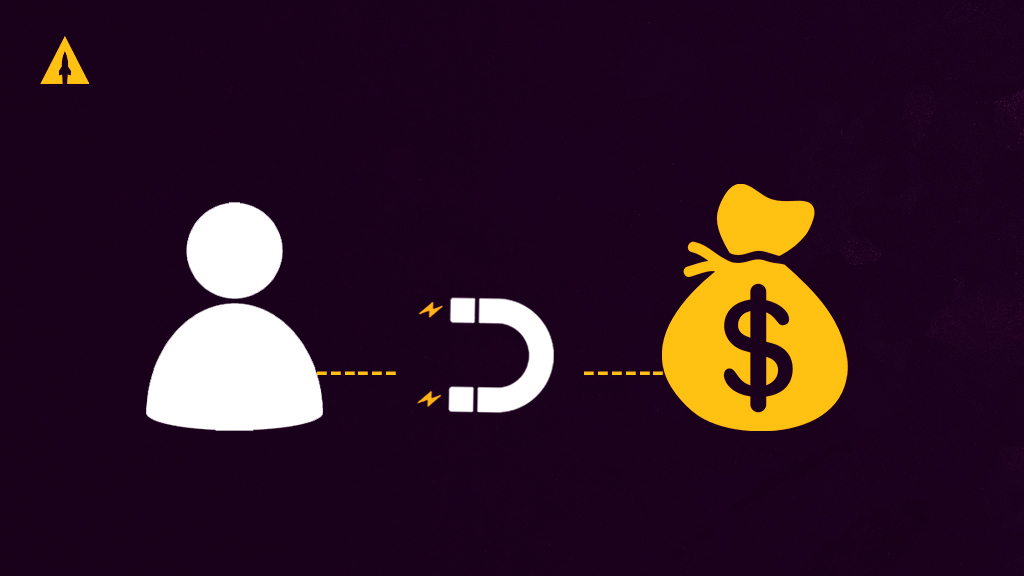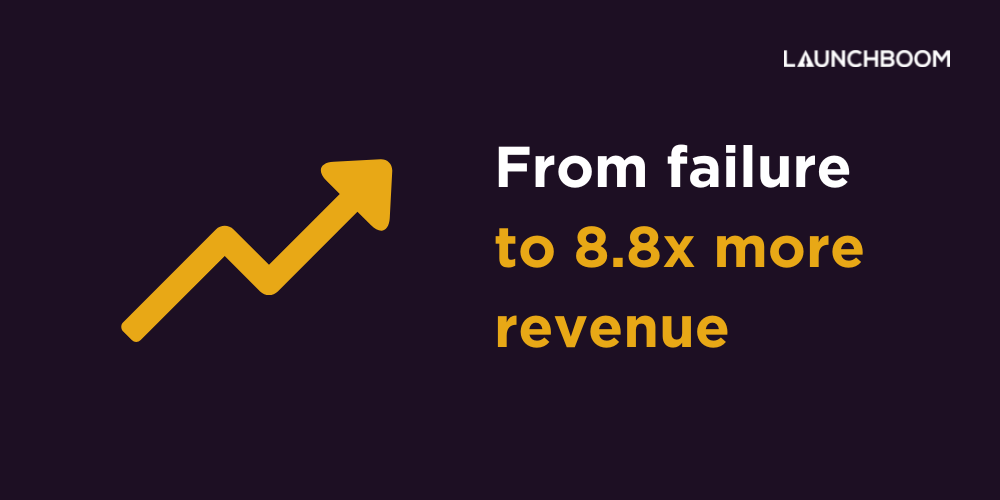
28 days ago started like a normal day. I woke up at 7:09AM (after snoozing once), grabbed my phone and started checking email. I saw we got a new review from a client so of course I had to read it.
But the first sentence in the review was not normal:
“LaunchBoom is the agency that changed my life, seriously.”
The review was written by Igor (shown below). He’s the inventor of the Hipstar. Before reading his review, I had known he was happy with his launch. But I didn’t realize just how big of an effect it had on his life.
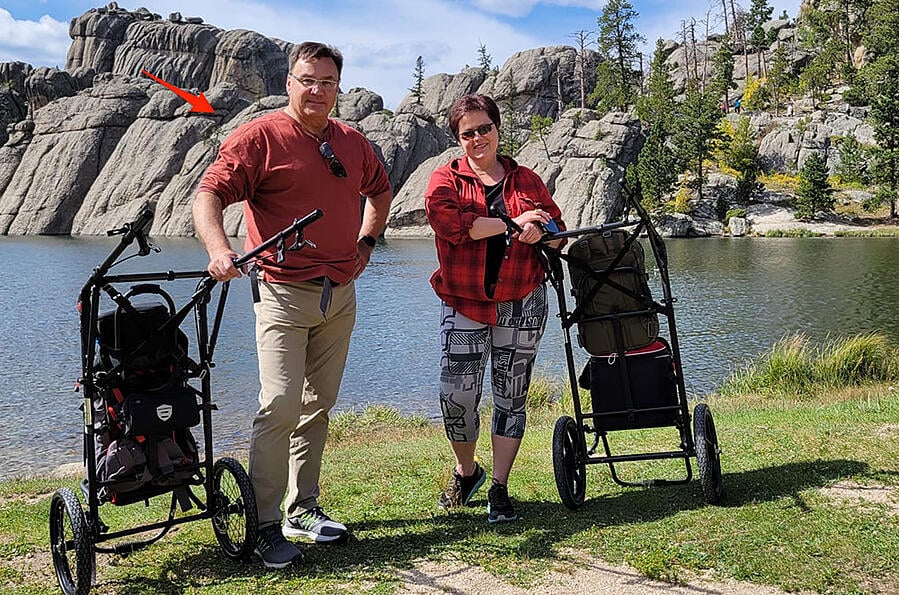
Igor’s story is fascinating. Not only because of the effect on his life, but because before he worked with LaunchBoom, his first campaign failed.
After the failure, Igor didn’t give up. He joined our LaunchBoom Accelerator program, learned how to improve, and launched again. The results speak for themselves:
His 2nd campaign raised 8.8x more than his first campaign.
But how did he do that?
Well, that’s what I want to talk about today. There’s much to be learned from failure. And when you have a success to compare the failure to, you can learn even more.
In this post, I’ll be breaking down the key differences between Igor’s failed and successful campaign. That way, you can learn and succeed the first time.
Let’s dive in!
Contents
Difference #1: Prelaunch Funnel
The most important part of the launch strategy is the prelaunch strategy. More specifically, building a prelaunch email list. Unless you’re an existing brand with a huge customer list, you’ll have to build one from scratch using ads.
The best way to build a prelaunch email list from scratch is to build a Reservation Funnel. A Reservation Funnel allows people to put down a $1 deposit to reserve the best discount on your product when you launch.
The Reservation Funnel was a game changer for Igor. Here’s a photo he sent to us of his whiteboard breaking down his funnel:
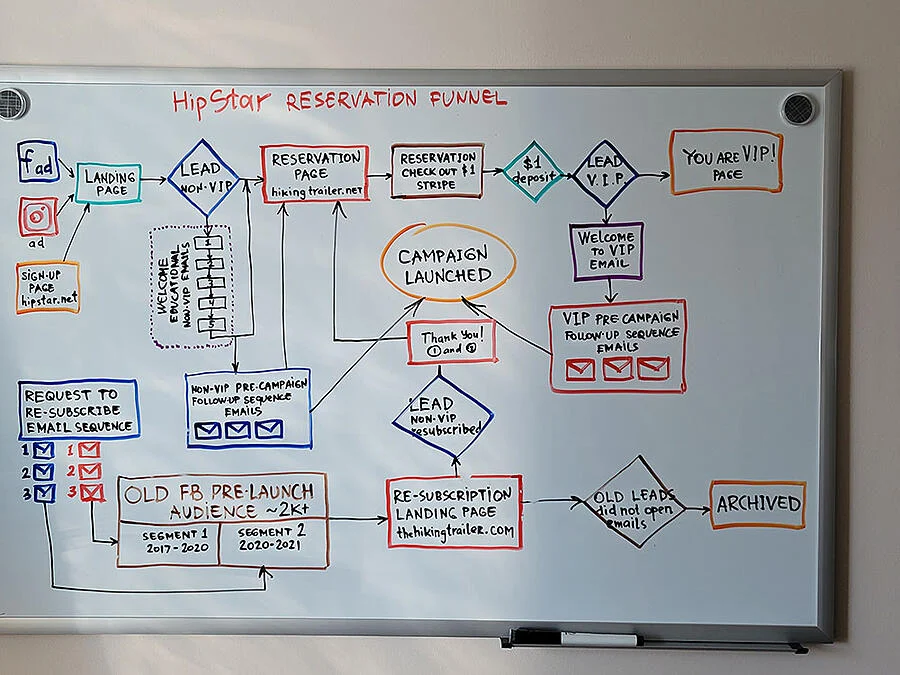
As you can see above, there are multiple steps in a Reservation Funnel. For the sake of simplicity and not making my already super long newsletters even longer, I’m only going to show you the landing page.
See the differences between Igor’s failed and successful landing page below:
Failed Landing Page
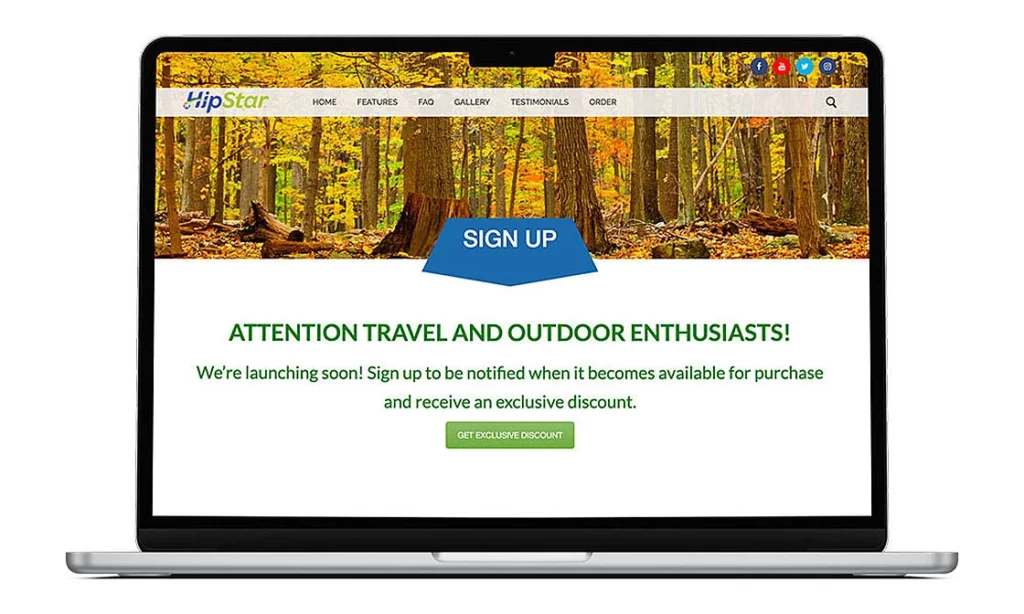
Successful Landing Page
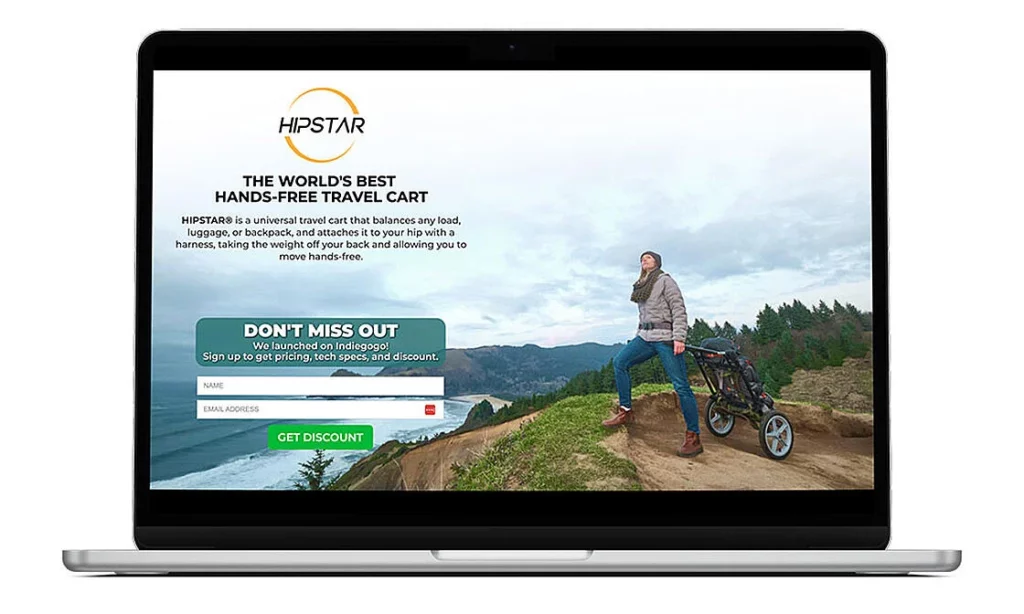
Key differences
- Used a Reservation Funnel to collect not only leads, but $1 deposits
- Headline copy is simple and clearly states what the product is
- Sub-headline copy explains more details about the benefits of the product
- Hero image clearly shows the target audience using the product
- Call-to-action (CTA) clearly states they should sign up to receive a discount
Difference #2: Automated welcome emails
Once someone becomes a lead from the prelaunch funnel, it’s time for email marketing. More specifically, you’ll want to set up email marketing automation. Using a tool like Mailchimp (which we use), you can trigger automatic welcome emails when someone signs up for your list.
The emails should feel personal and be concise. You want to start to build a one-to-one relationship with your email list, but not bore them with information.
Here’s the differences between Igor’s failed and successful welcome email:
Failed Email
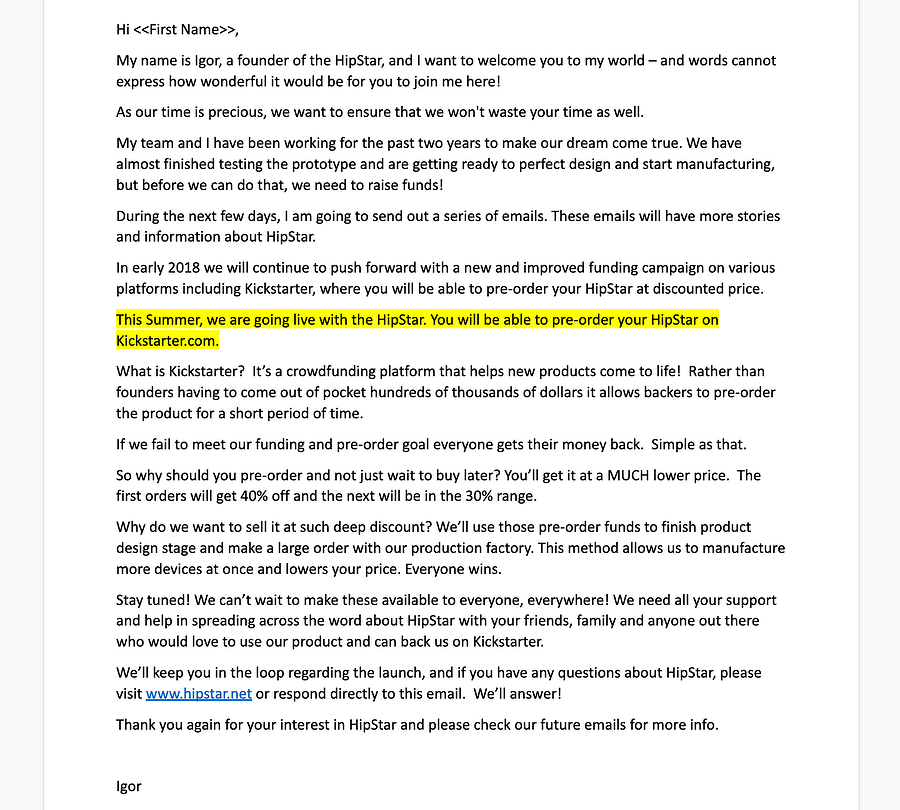
Successful Email
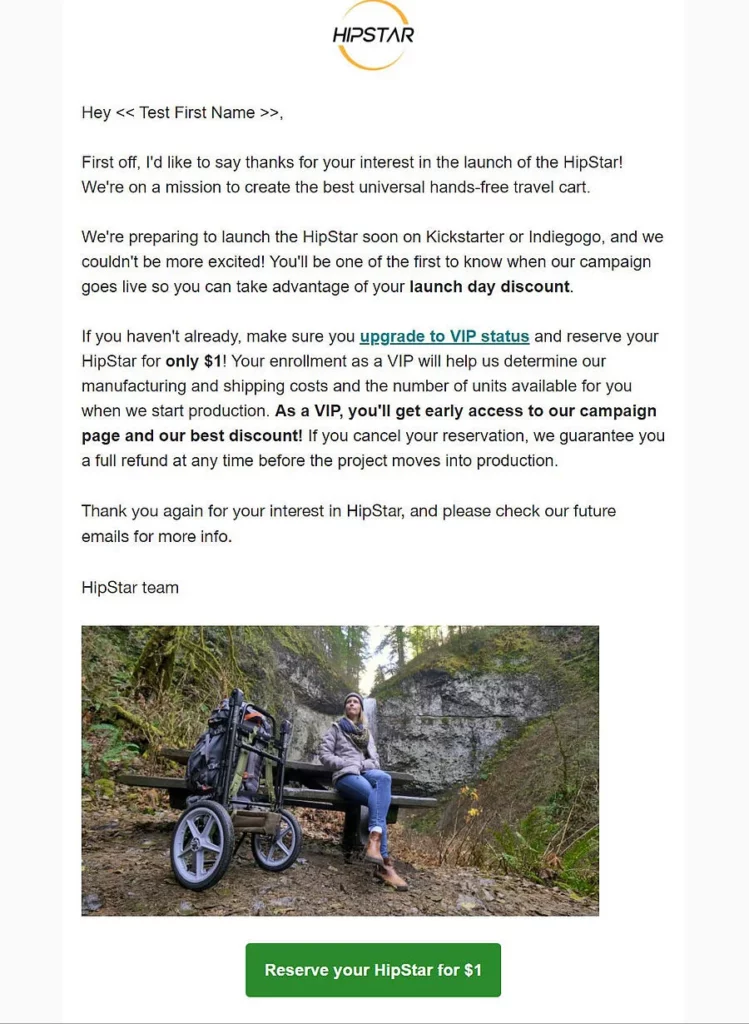
Key differences
- Significantly shorter and more concise copy
- Includes imagery of the product
- Clear CTA to put down a $1 deposit
Difference #3: Campaign video
Every crowdfunding campaign needs a campaign video. It will be the first marketing asset that people will see when they land on your campaign.
Think of your campaign video like an advertisement. Just like an ad, the goal of your campaign video is to convince the person watching to buy your product. You’ll need to hook them immediately and keep their attention the whole way.
You can see Igor’s failed and successful campaign video below. I recommend watching them both to see all the differences.
Failed Video
Successful Video
Key differences
- Keeps attention by being much faster paced (42 seconds shorter)
- Introduces the product within 5 seconds vs. 17 seconds
- Includes text overlays throughout the video that calls out key points in the script
Difference #4: Campaign Page
The campaign page is actually more important than the campaign video. That’s because the majority of visitors to a campaign do not watch the campaign video. They do scroll through the campaign page though.
Designing a good campaign page isn’t as difficult as you may think. Outline your campaign page by deciding all of the headlines and sub-headlines first. You should be able to understand the product just by reading them.
Once the outline is complete, you simply have to fill each section with supporting copy and imagery. It’s a best practice to use GIFs in sections where showing the product in action would help someone better understand it.
Here are the differences between Igor’s failed and successful campaign page:
Failed Campaign Page
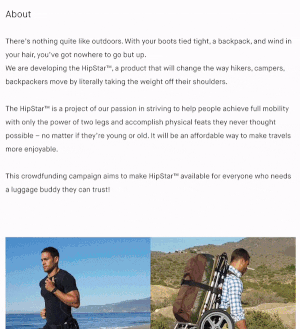
Successful Campaign Page
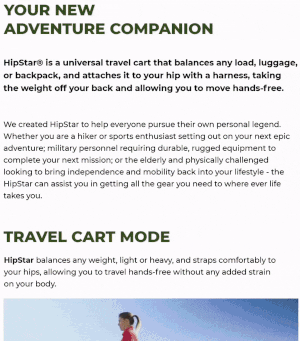
Key differences
- Headlines are clear and easy to understand
- Each section is supported by brief copy and imagery
- Great use of GIFs to show the product in action
- Having significantly less text makes it easier to read
Difference #5: Results
Because of all these changes, Igor’s 2nd campaign was a huge success. You can see the final results of the campaigns below:
Failed Campaign Results
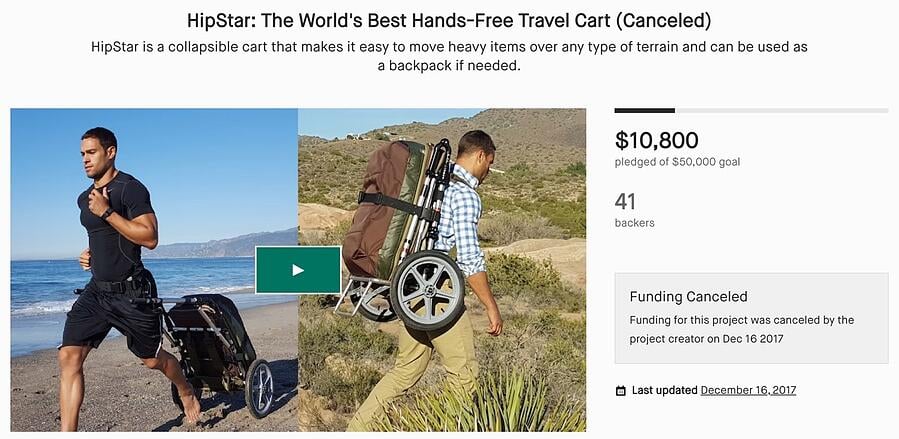
Successful Campaign Results
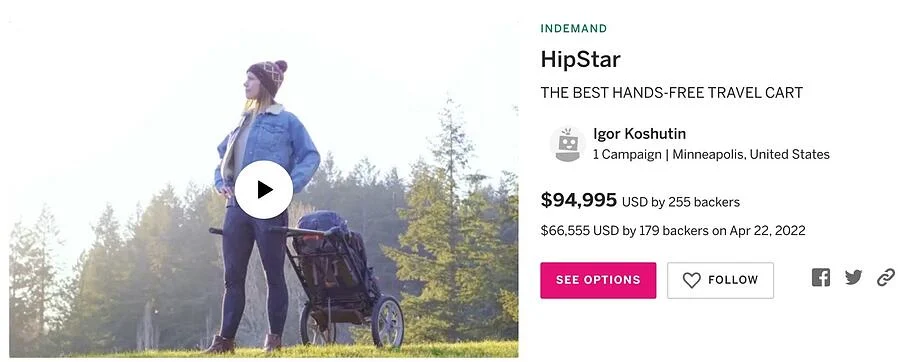
Here’s a recap of the top differences between Igor’s failed and successful campaigns:
- Prelaunch funnel: used a Reservation Funnel to collect not only leads, but $1 deposits
- Automated welcome emails: Simple and concise copy with a clear CTA
- Campaign video: Fact-pacing with text overlays to drive home key points
- Campaign page: Easy to read sections supported by images and GIFs
All of the differences resulted in a 8.8x increase in sales. More importantly, it allowed Igor to change his life and pursue his dream of building Hipstar.



